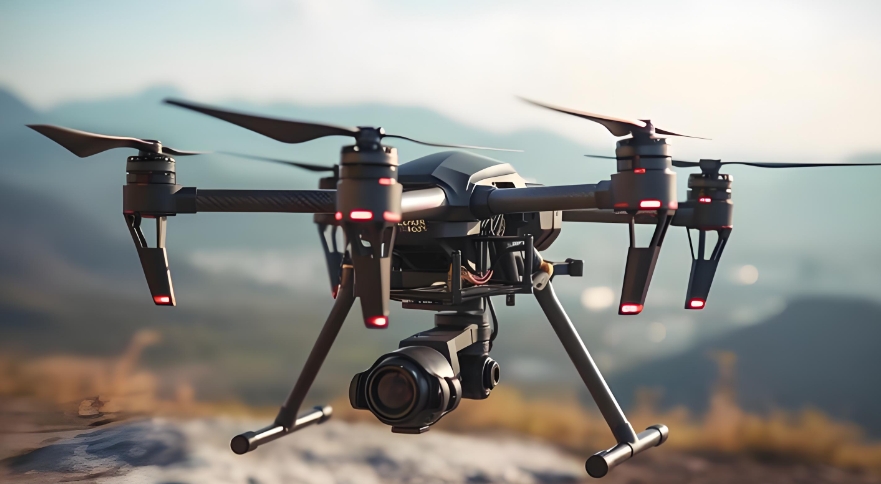new blog


Unmanned Aerial Vehicle (UAV), commonly referred to as "drone," is an aircraft that is operated without a human pilot on board, using radio remote control and onboard programmed control systems, or fully or intermittently autonomous operation via onboard computers. As a new type of aircraft, drones differ from manned aircraft in terms of operational requirements and mission objectives. Drones typically require low cost, lightweight structures, high stealth capabilities, long flight durations, and high storage longevity. For unmanned combat aircraft, there are also requirements for high maneuverability and significant overload capacity.

Due to the characteristics of composite materials, such as high specific strength, high specific modulus, strong designability, excellent fatigue resistance, improved stealth performance, long service life, and good shock absorption, most structures of drones are made from composite materials. This includes components such as the fuselage, wings, horizontal stabilizers, vertical stabilizers, tail supports, control surfaces, and landing gear.
The application of composite materials in drone structures can reduce weight by 20% to 30%. Currently, the industry considers the amount of composite materials used as one of the important indicators for measuring the advancement of a drone, generally requiring it to reach around 60% to 80%. However, there are already drones in the United States that have achieved an all-composite structure, with the use of composite materials exceeding 90%.
The application of composite materials in the field of drones includes the widespread use of polyacrylonitrile (PAN) based carbon fibers and Nomex honeycomb materials for the drone's fuselage, wing skins, and leading edges. PAN-based carbon fiber sheets and foam materials are commonly used to create foam sandwich composites or PAN-based carbon fiber tubes, which are extensively used as main beams in drones. Kevlar fiber materials are applied to propellers, fuselages, and connectors to significantly enhance fatigue strength and impact resistance.
For medium to large unmanned aerial vehicles (UAVs), the primary load-bearing structures are made of metal, while other components utilize composite materials. Small to medium UAVs use carbon fibers, glass fibers, and hybrid materials, while unmanned combat aircraft primarily employ carbon fiber composites and aramid fibers. Small, low-speed drones make use of carbon fibers, aramid fibers, paper honeycomb, and wooden materials.

Since drones do not need to consider the physiological limits of human operators in their structural design, they can focus more on optimizing maneuverability, leading to material selection that differs from manned aircraft. The use of composite materials significantly enhances the stealth capabilities of the airframe.
Firstly, because polymers are non-conductive, they help avoid the formation of scattering fields for detection waves. Secondly, the application of composite materials plays a crucial role in effectively combining structural integrity with functionality. For example, the use of stealth materials can greatly reduce the airframe's radar wave reflection. Lastly, the integration of composite materials contributes to the overall integrity of the airframe, allowing for a smooth, unified design that achieves stealth by avoiding seams, fasteners, and other irregularities that could scatter detection waves.
In summary, these design choices effectively enhance the concealment of drones. Statistics show that many countries around the world are significantly utilizing advanced composite materials primarily made of carbon fiber in drones, accounting for 60% to 80% of the total structural mass, resulting in a weight reduction of over 25%. As a result, more and more load-bearing structures in drones are being designed and manufactured using carbon fiber composite materials, evolving from initially non-load-bearing designs.

The design of co-cured composite structures for drones aims to achieve better weight reduction, increased payload capacity, and extended endurance. Lightweight design of composite materials is a modern trend in UAV design, focusing on integrated structural design and manufacturing. As the usage of composite materials increases, the complexity of structures continues to rise, making it significant to fully utilize the potential of composites, significantly reduce weight, and simplify assembly relationships through integrated structures, which also shortens production processes.
Typically, drone structures are formed using plate, beam, and rib configurations, which are then assembled through room-temperature adhesive bonding. The process begins by bonding one side of the plate to the frame, by bonding to the other plate, where the adhesive quality cannot be monitored. This project aims to explore and establish a method for co-curing wall panels and beams in a single step (mid-temperature curing), which provides greater bonding strength, higher reliability, shorter assembly cycles, and significantly lower costs, while also reducing the need for fasteners.
The co-curing design and manufacturing technology is advanced, allowing for better exploitation of the advantages of composites, such as high design flexibility, high specific strength, and high specific modulus. This enables further lightweight design, achieving goals such as overall weight reduction, increased payload capacity, and extended endurance.
The application of composite materials has evolved from non-load-bearing and secondary load-bearing components to primary load-bearing components. Development trends are moving toward larger, more integrated, and lower-cost solutions. The overall forming technology of composite materials aims to achieve lightweight, efficient, and cost-effective solutions by reducing the number of components and fasteners in complex and large structures. Within this overall forming technology, co-curing forming technology is prioritized, as it results in lightweight composite components with minimal deformation.